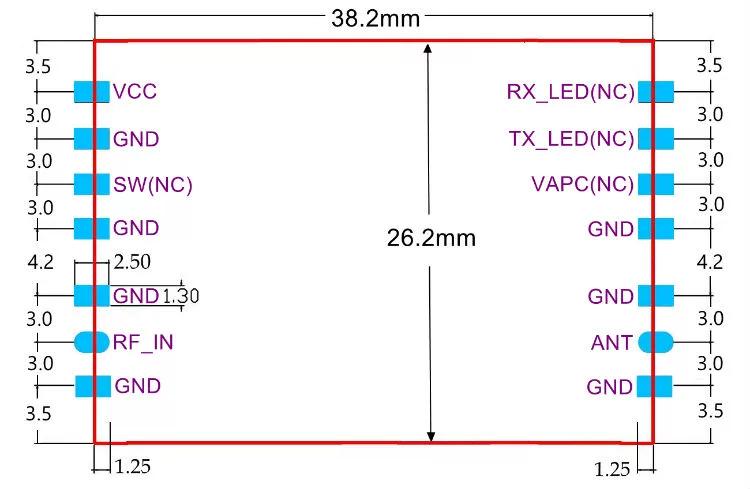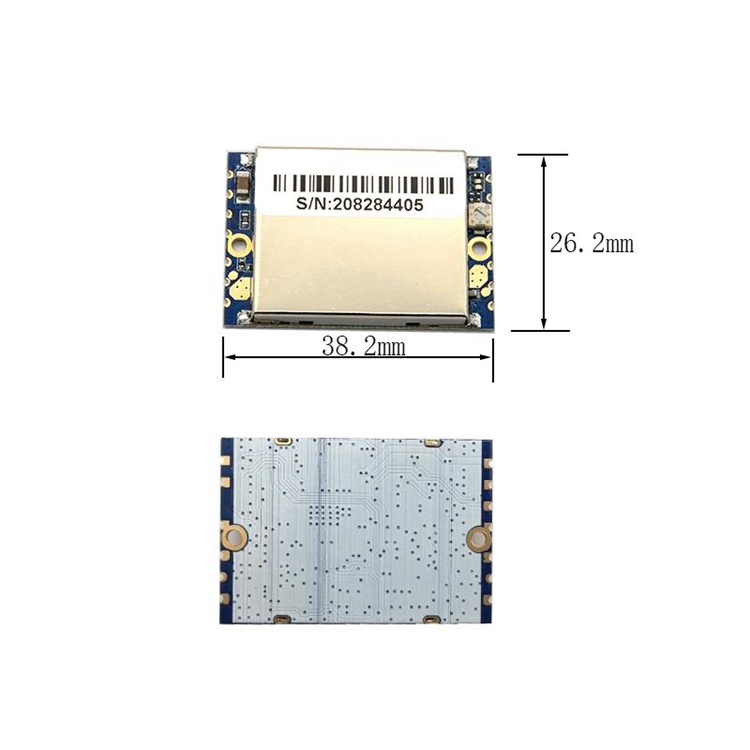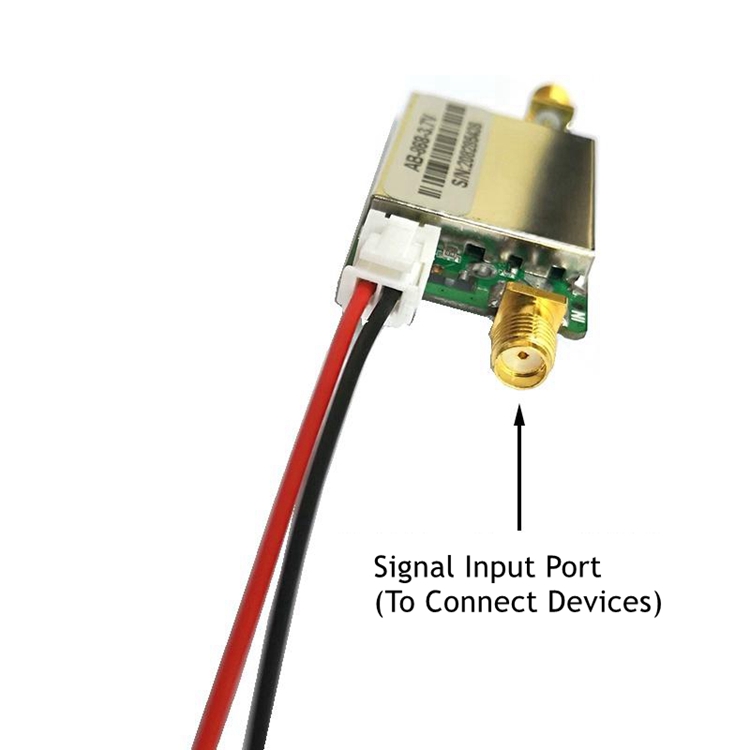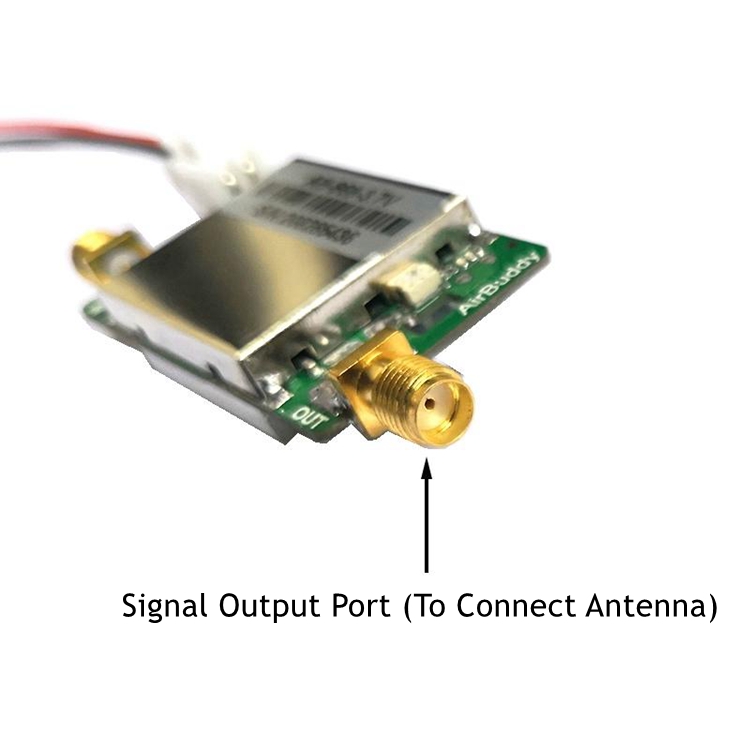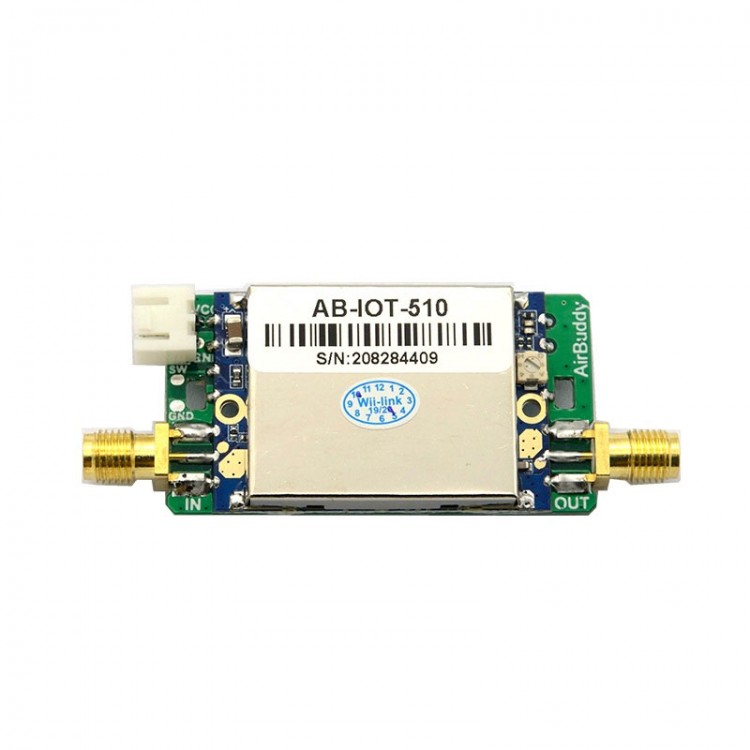
| Quantity | 3+ units | 10+ units | 30+ units | 50+ units | More |
|---|---|---|---|---|---|
| Price /Unit | $27.63 | $27.06 | $26.22 | $25.09 | Contact US |
AB-IOT-510SMA 470MHz-520MHz Bi-directional Signal Amplifier Module IoT RFID Transceiving Signal Amplifier
Description:
- The AB-IOT-510 series bidirectional signal amplification module is designed for various applications in 510M (470MHz-520MHz) frequency bands. Its compact size and convenient use make product design for high-power and long-distance applications in this frequency band easier.
- Mainly used in various occasions with special requirements for signal transmission distance and connection stability in the frequency range of 400MHz-480MHz, such as 433MHz remote-controlled aircraft, 433MHz wireless data acquisition system, Lora products, 470MHz-510MHz and other low-power wireless products operating in the frequency range of 400MHz-520MHz, this bidirectional amplification module can be used to increase transmission distance.
- Note: Handheld walkie talkies cannot use this module to achieve transmission range extension due to their high transmission power.
Features:
- Equipped with an intelligent receiver/transmitter discrimination circuit, it can function normally without the need for front-end devices to provide receiver/transmitter switching control signals.
- The module works by default in the receiving state, amplifying the received signal. When it detects that the front-end device is transmitting a signal externally, it instantly switches to the transmitting amplification state.
- The transmission gain is adjustable, making it convenient to be compatible with wireless devices of different transmission powers.
- The receiving/transmitting link has extremely high isolation, and the receiving link can withstand strong external interference without causing self excitation in the loop.
- Compatible with LORA and various modulation methods such as FSK/ASK/OOK/MSK/GFSK.
Specification:
- Working frequency: 470MHz - 520MHz
- Receiving gain: 11dB±2dB
- Receiving noise ratio: ≤2.0dB
- Transmitting gain: 5dB - 11dB (±2dB) adjustable
- Threshold for distinguishing between transmitting and receiving switch: -2dBm
- Input power range: 1dBm - 25dBm
- Maximum transmitting power: 31.5dBm (1.4W) for 3.7V power supply; 33.5dBm (2.3W) for 5.0V power supply; 34.5dBm (2.8W) for 6.0V power supply
- Working status indicator:
Receiving status: green light on, blue light off
Transmitting status: blue light on, green light off
TDD working status: blue and green lights flash alternately
- Working voltage: 3.6 - 6.0V
- Working current:
RX status: 10mA (±3mA)
TX status: ≤800mA (3.7V power supply); ≤1000mA (5.0 power supply); ≤1500mA (6.0V power supply)
- Product size: 38.2 x 26.2 x 4.5mm
Note:
- The working voltage only affects the maximum transmission power and has little effect on the transmission gain. Therefore, for applications where the output power of the front-end equipment is not high, it is generally recommended to use 3.7V lithium batteries for direct power supply or 5.0V power supply, and there is no need to use 6.0V power supply.
- Due to the maximum transmission gain of the module being around 11dB, in order for the actual output power of the module to reach its maximum value, the output power of the front-end device must be sufficient. For example, in order to achieve an actual output power of 34.5dBm at a supply voltage of 6.0V, the output power of the front-end device must reach 13.5dBm (23.5+11=34.5). If the output power of the front-end device is only 10dBm, even if the operating voltage is 6.0V, the actual output of the module can only reach 21dBm, not 34.5dBm. Please be aware of this.
- Under normal circumstances, it is not recommended to use maximum gain (power) transmission because the higher the transmission power, the greater the power consumption and heat generation. High power consumption is extremely detrimental to battery powered devices. In practical use, it is recommended to adjust the gain while testing the coverage range, so that it can just meet the actual coverage requirements and have a slight surplus.
- To ensure reliable switching, at least 3dB margin should be reserved for the transmission power of the front-end device, that is, the minimum transmission power of the front-end device cannot be lower than 1dBm, otherwise it may cause unstable switching between receiving and transmitting.
- When the module is working, most of the timing is in the receiving state, and the current in the receiving state is about 10mA. When the module switches to the transmitting state and transmits at maximum power, the instantaneous current can reach up to 1.5A. Due to the extremely short transmission timing (normally, each data packet is at the ms or even us level), the average current during the entire working period is generally not higher than 200mA.
Warning:
- This module is not recommended for applications with constant emission (i.e. constant blue light on)! If it is necessary to work in a constant transmission mode and the transmission power is high (close to 2.8w), there will be a phenomenon of high current and severe heating. At this time, additional heat dissipation measures (such as adding heat sinks or fans) must be added, otherwise the maximum transmission power will automatically decrease due to high temperature, and in severe cases, the amplifier will be burned out.
Transmission gain adjustment method:
- The transmission gain is 5dB when the potentiometer is turned counterclockwise to the bottom.
- The transmission gain is 11dB when the potentiometer is turned clockwise to the bottom.
Package Included:
- 1 x Signal Amplifier Module
